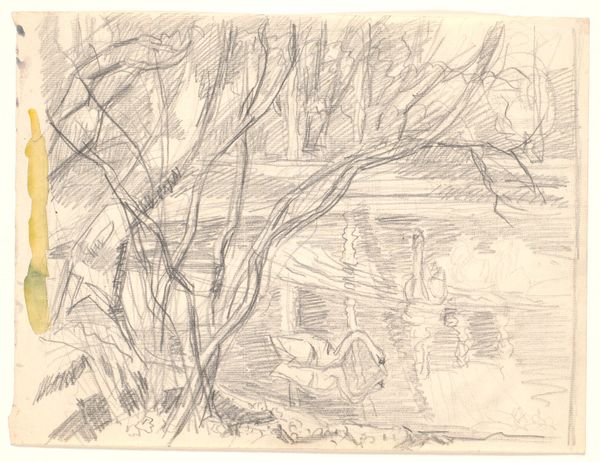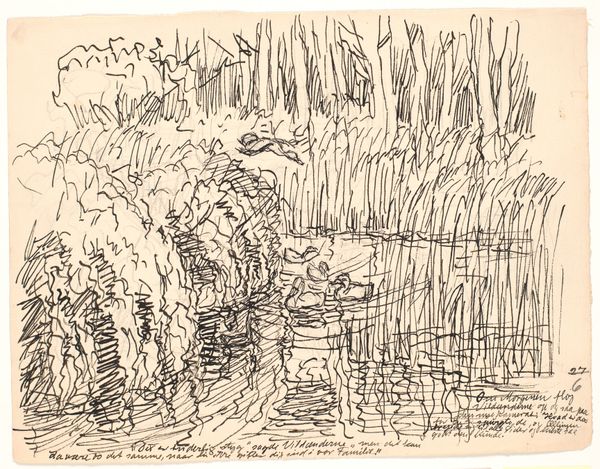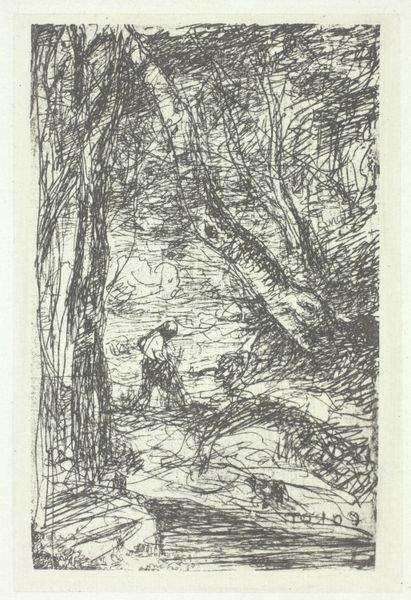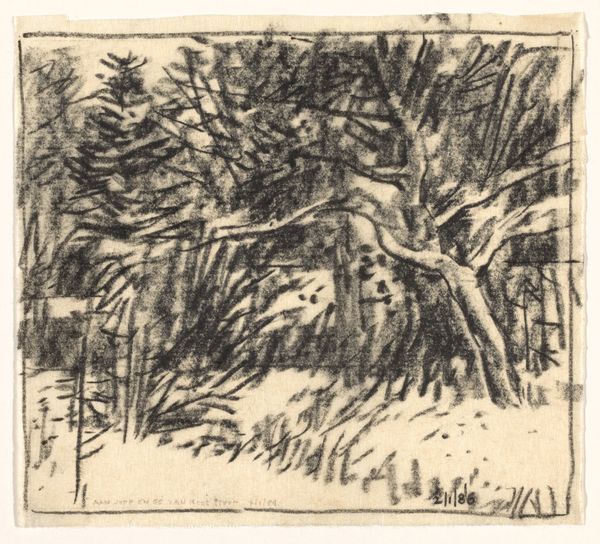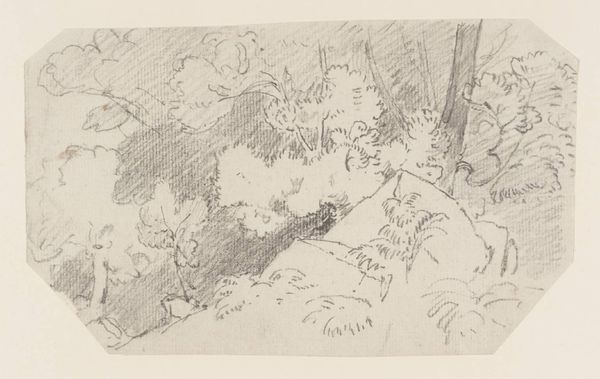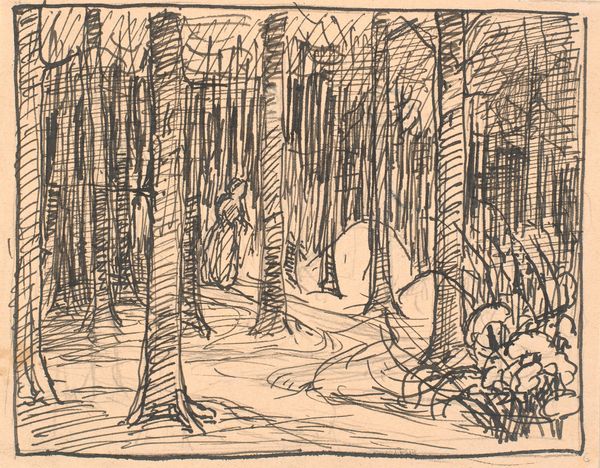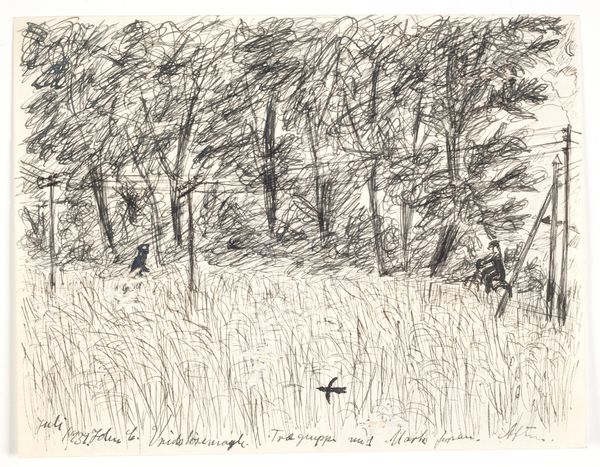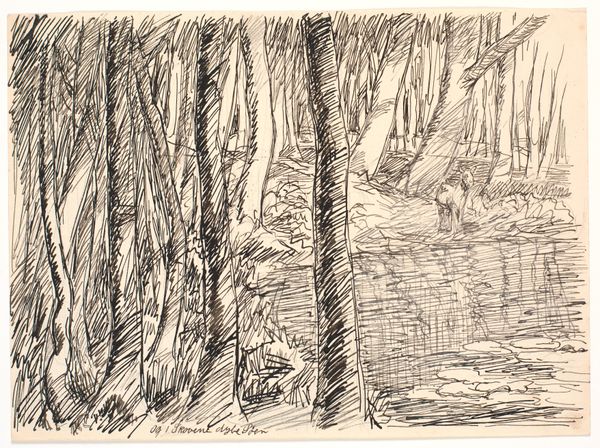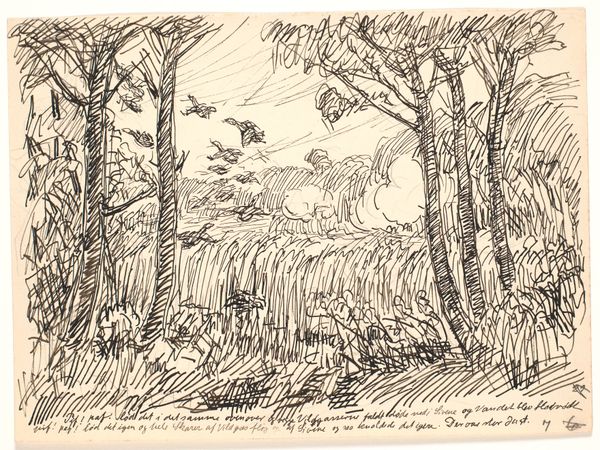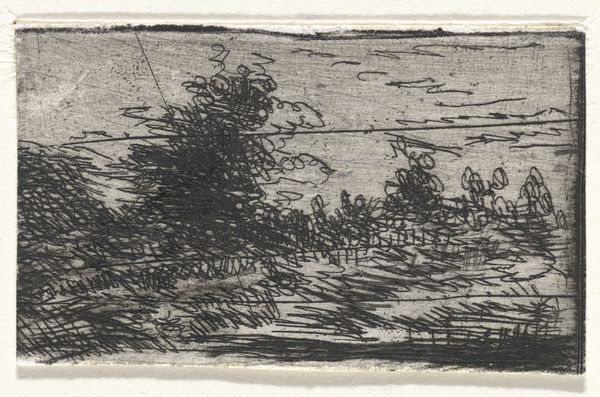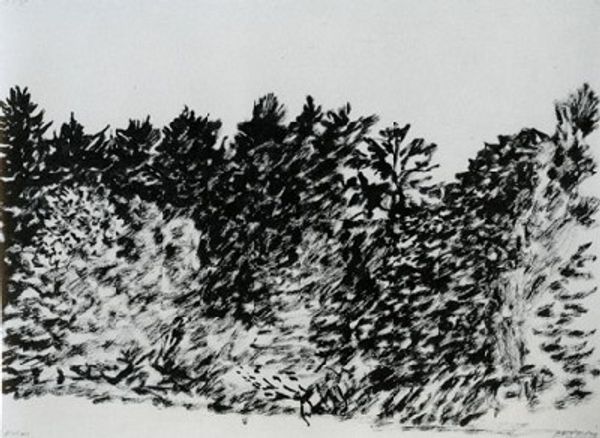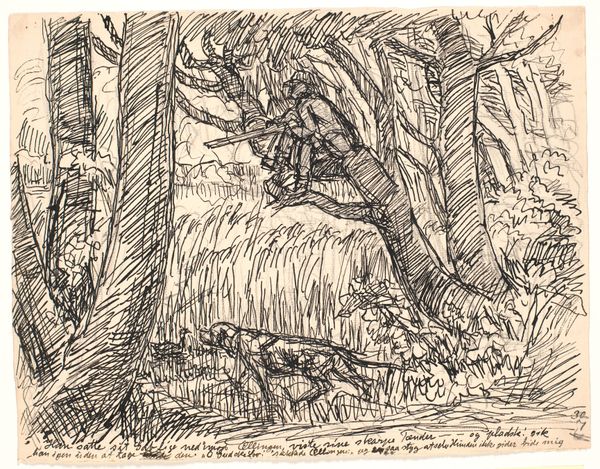
drawing, charcoal
#
drawing
#
rippled sketch texture
#
neat line work
#
pen illustration
#
pen sketch
#
landscape
#
ink line art
#
linework heavy
#
forest
#
pen-ink sketch
#
thin linework
#
pen work
#
charcoal
#
doodle art
#
realism
Dimensions: height 138 mm, width 160 mm
Copyright: Rijks Museum: Open Domain
Curator: Welcome. We’re standing before Kees Stoop's drawing, "Gebladerte," which translates to foliage. Stoop worked on it between 1939 and 2009, a considerable span. It's currently held here at the Rijksmuseum. Editor: My first impression is one of dense, almost claustrophobic energy. The charcoal rendering creates a really intense play of light and shadow. Curator: Indeed. Stoop made this piece during and after the Nazi occupation. While seemingly a simple landscape, it speaks to a world facing massive upheavals and loss. It invites us to consider how nature itself can be both refuge and battleground in times of conflict, with the foliage obscuring as much as it reveals. Editor: I'm struck by the technique itself. The visible texture of the charcoal, the aggressive marks making up the trunks and leaves...it all contributes to a sense of unease and chaos within a seemingly serene subject matter. Did Stoop use preliminary sketches, or was this done 'alla prima'? Curator: Knowing Stoop's wider body of work, this drawing connects deeply to discussions surrounding the Dutch landscape and identity. His involvement in artist collectives focused on representing working-class life also lends a subtle commentary here – it feels as though the density and struggle of the working class gets a voice within a field. It could easily spark dialogue about social and environmental justice, as well as labor during that time. Editor: Absolutely, and from a formalist viewpoint, note how the dark lines against the lighter background create a strong visual hierarchy, pulling your eye around the canvas in a near-constant circular motion. It avoids a traditional focal point, generating this restlessness. Curator: Exactly, reflecting on how art holds space for challenging historical narratives alongside our need for spaces of contemplation in the midst of unrest is vital. Stoop invites us to observe history in ways that confront injustices and seek change. Editor: And I am intrigued by this very tangible yet evocative piece, particularly regarding how such an understated piece prompts deeper reflection and careful inspection. Curator: Agreed. Hopefully, you, too, found something meaningful. Editor: Indeed. Thank you for joining us today.
Comments
No comments
Be the first to comment and join the conversation on the ultimate creative platform.
